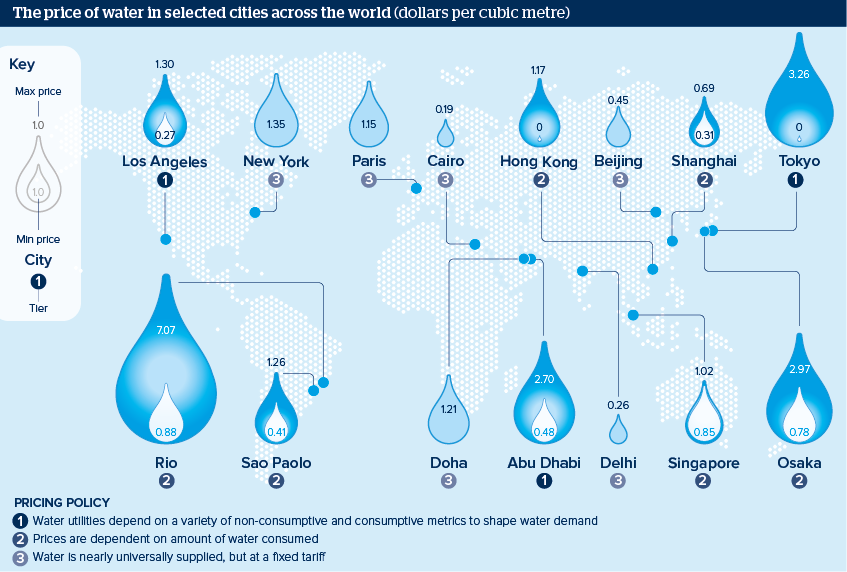Common global water pricing policy a long way off
Growing usage and pricing transparency will be critical if metropolitan pricing is to begin to align

Source: Municipal water utilities, Oxford Analytica
Outlook
Water insecurity is the world's leading security risk. Developing global strategies and policies to address cross-border water insecurity will in part depend on a common methodology to price and value water. Similar efforts are being made in carbon trading (ie placing a price on pollution). Current metropolitan pricing mechanisms and the limited success of carbon trading suggest that this is some way off.
Infrastructural upgrades are costly, so utilities will initially rely on improved monitoring technologies. Differentiators such as type of property, time of day and weather are likely to play an increasing role in determining water prices as utilities gain better insight into usage. Consumers will benefit from increased price and usage transparency as a result of these improvements.
Impacts
- A key barrier to a global or regional water security strategy is the lack of consensus on how to price and value water.
- Improved monitoring will enable water utilities to develop more sophisticated pricing methodologies to alter end-consumer usage patterns.
- Established cities will leverage the benefits of more affordable monitoring technologies to limit significant infrastructure upgrades.
See also
- Water crisis will cripple China's economy - Oct 14, 2015
- More graphic analysis